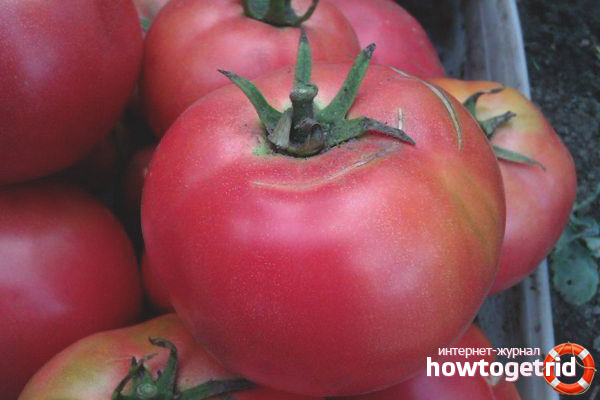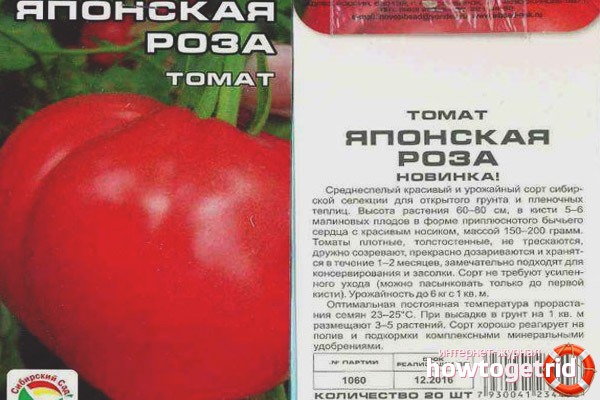The content of the article
This type of tomato is a great choice for those who prefer pink varieties. Tomatoes have a sugar flavor, are juicier and are considered unpretentious in cultivation. At the same time, they are characterized by a high level of productivity in growing conditions in closed greenhouses.
Characteristic
The variety was grown for the first time as a result of Russian selection for breeding indoors. As for regions with a climate that allows cultivation in open spaces, it is recommended for planting in beds. It has a high degree of productivity and allows you to collect up to 6 kg of tomatoes from a bush. It tolerates transportation and long storage.
The Japanese rose belongs to mid-season varieties, the plant height reaches 60-80 cm, is determinant, therefore there is no special need for pinching. During the ripening period, the bushes look beautiful and neat. Tomatoes form small clusters of up to 6 pcs. on each brush, their appearance resembles hearts of a bright pink hue.
The pulp of the fruit, as a rule, is characterized by juiciness, structure density, sugar taste and pleasant aroma. Due to the high content of useful trace elements in the composition, it is recommended for inclusion in a children's diet.
Application
Tomatoes can be consumed both fresh and used for preservation and in salads. Ripe fruits allow you to get a rich sweetish juice of a pinkish color, which is recommended even for children who are allergic to red varieties of tomatoes.
Care
Seeds of this variety are recommended to be treated with a growth stimulator before sowing. No additional disinfection procedures are required. It is recommended to select the soil in the ratio of mixed humus with turf and sand. Sowing takes place in a box in the soil to a depth of not more than 2 cm. To germinate the maximum number of seedlings, it is desirable to maintain a constant temperature of about + 25 °.
After the appearance of the first shoots, boxes with seedlings are exposed to the sun or under special lamps. Shoots must be watered with warm water that has settled in advance using a spray gun.
Transplanting into a greenhouse at a permanent place of cultivation is recommended in early May, and when growing in open beds - closer to the beginning of June. The soil should be loosened, with pre-fertilized mineral composition holes. For each sq.m. no more than 3 plants are planted. Watering is not necessary often, but a lot - warm water is needed for watering.
This variety does not need pinching and additional tying. Side shoots are removed only if the main stem of the plant is weakened.
For the entire growing season, it is recommended to feed tomatoes no more than 4 times.
Pests
The variety is immune to major tomato diseases, but still needs preventative measures. Therefore, before sowing, it is recommended to disinfect the soil with a solution of potassium permanganate, and spray young shoots weekly with agents for the prevention of fungal diseases.In case of manifestation of signs of the disease, it is necessary to immediately remove the affected leaves, and treat the fruits with a copper-containing composition. When aphids appear, plants are treated with a soapy solution, and ammonia helps in the fight against slugs.
Reviews
- Olga Vasilievna, 58 years old: Last year, I walked around the village and from afar noticed a tomato with a familiar interesting shape. I came to find out what kind of variety it was. It turns out the "Japanese Rose." She herself grows the first year, but, nevertheless, praised. He says she fed only a couple of times during the summer, and the number of tomatoes exceeded all her expectations. This year I’ve already bought it, I'm waiting for the season to start growing. Then I will definitely inform my impressions.
- Zinaida A., 24 years old: Good day to all! For the second year, my grandfather and I have been growing such a wonderful variety. Thanks to friends, they told us this. Water as usual, treated from insects. For the season did not notice particularly pests. Recommended.
Video: a unique way to water tomatoes











Submit